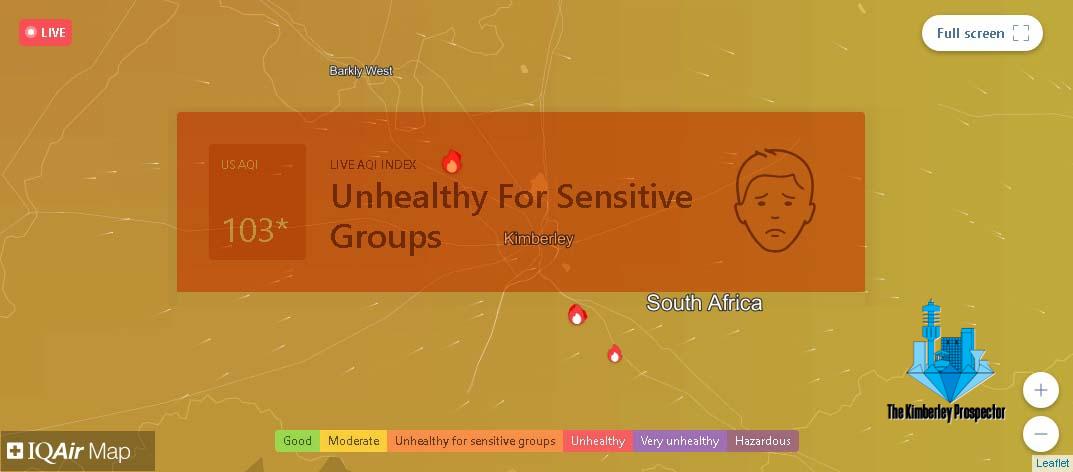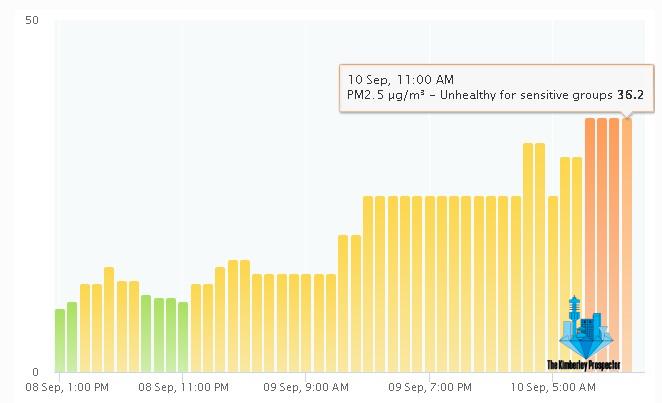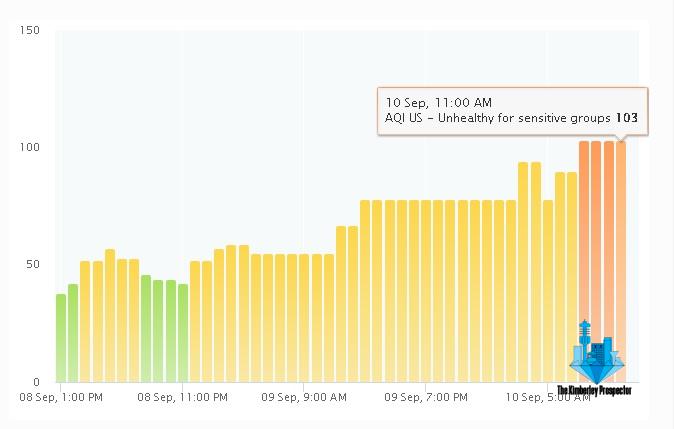KIMBERLEY – Air pollution is a growing concern worldwide, with detrimental effects on human health and the environment. In Kimberley, Northern Cape, South Africa, the current PM2.5 concentration stands at a staggering 36.2 µg/m³, which is nearly 7.2 times higher than the World Health Organization’s (WHO) annual air quality guideline value. This article delves into the implications of such high pollution levels and the associated health risks faced by the residents of Kimberley.
Alarming Air Quality Index (AQI) Levels
The US Air Quality Index (AQI) rates the air quality on a scale from 0-500, with higher values indicating greater pollution levels. Kimberley’s current AQI of 103 falls under the “Unhealthy For Sensitive Groups” category, which implies that individuals with respiratory conditions, children, and the elderly may suffer adverse health effects. It is important to note that these values are modeled using satellite data, meaning the actual pollution levels on the ground could be even worse.
Regional Comparisons
When compared to other cities in South Africa, Kimberley’s pollution levels appear even more worrisome. In comparison to Springs, Gauteng, which has an AQI of 156, and Berea, KwaZulu-Natal, with an AQI of 152, Kimberley’s air quality is comparatively poorer. These regional comparisons accentuate the severity of the issue and indicate a pressing need for immediate action.
Health Risks for Kimberley Residents
Exposure to high levels of PM2.5, fine particles suspended in the air with a diameter of 2.5 micrometers or less, can have severe health implications. These particles can penetrate deep into the respiratory system, potentially leading to various respiratory and cardiovascular diseases. Prolonged exposure to such pollution may increase the risk of lung cancer, heart attacks, stroke, and other respiratory illnesses.
Conclusion
The current air pollution levels in Kimberley, Northern Cape, present a significant threat to the health and well-being of its residents. With PM2.5 concentrations 7.2 times higher than the WHO’s recommended guidelines, the risks of respiratory and cardiovascular diseases are heightened. Urgent measures need to be taken by authorities to combat pollution and improve air quality in Kimberley. The implementation of stricter emissions standards, the promotion of cleaner energy sources, and public awareness campaigns about the importance of air quality can contribute to a healthier and safer environment for all residents.
Tags: Air Quality Air Quality Index

